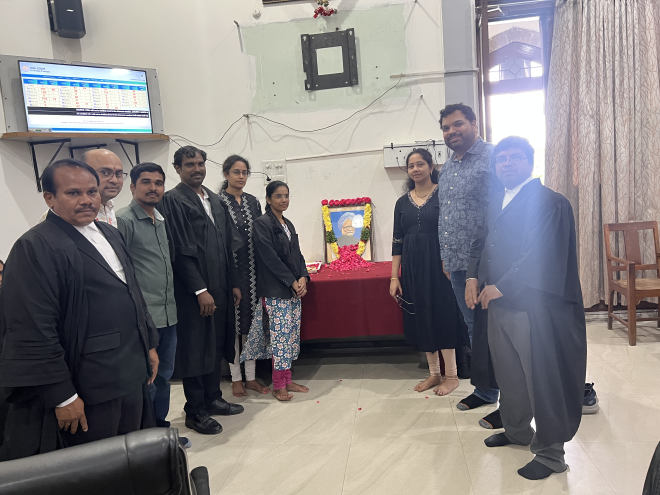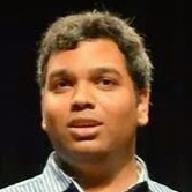A Day at the High Court: A Journey into Justice #
At precisely 7:53 a.m., my phone rang. The caller was a classmate from college, and his voice carried some curiosity.
“Is today a holiday?” he asked. He had read in the newspaper that educational institutions were closed due to the passing of the former Prime Minister, Dr. Manmohan Singh.
The news was somber. Dr. Singh was the architect of the revival of India in 1992 when he liberalized the economy. I assured him I would confirm with the authorities and get back to him. Shortly after, it was indeed confirmed—a holiday had been declared.
Fifteen minutes later, another call came through. This time, it was Swami, another classmate. His suggestion was unexpected but intriguing: “Since it’s a holiday, why don’t we visit the High Court?” Normally, I’d jump at such an idea, but I was physically drained. I had just returned from a three-day trip, one where I had driven extensively, leaving me fatigued.
Still, the allure of experiencing the High Court for the first time was tempting.
“Find out the process,” I told him.
“We’ll go after 10 o’clock.”
Swami called back with all the details, and before I knew it, Swapna and I were on our way.
We embarked on what would turn out to be a fascinating day of legal observations and serendipitous encounters.
First Steps and Serendipity #
Arriving at the High Court was both thrilling and intimidating. It was a historic building with over 100 years of heritage. However, once inside, we were faced with a practical dilemma: neither Swapna nor I knew where to go. As first-timers, we felt lost.
Enter Neelu.
While standing near the entrance, Swapna approached a young advocate for directions. The advocate, Neelu, took one look at me and said, “You look familiar.” I couldn’t place her immediately, but when I asked if she had attended the Law Students’ Convention the previous Saturday, her face lit up. “Yes! We’re from Vinayaka Law College,” she exclaimed. She remembered me from my brief speech at the convention, and this chance encounter couldn’t have come at a better time.
Neelu, who had just wrapped up her work at the court, offered to show us around. Her guidance was invaluable and transformed what could have been a confused wander into an organized and insightful experience. She had been interning with an advocate for the past three months.
Court No. 29: Justice Vijayasen Reddy and the Persistent Advocate #
The first courtroom we visited was Court No. 29, presided over by Justice Vijayasen Reddy. As we were inspired by the story of Subhashan Reddy, father of Vijayasen Reddy, we chose his courtroom first. Subhashan Reddy never joined with a senior advocate and directly entered practice after referring to cases in the High Court Record Room.
The cases in this courtroom were service matters—transfers, appointments, and similar disputes. The first case we observed involved a lady advocate arguing on behalf of her client, a man who was 60, seeking a transfer from Rangareddy to Hyderabad. The Government Pleader made it sound like a trivial matter to ask for a transfer with only six months remaining in service.
What stood out was her persistence. The judge initially suggested hearing the matter on Tuesday, but the advocate, calm yet assertive, insisted that the matter be heard immediately.
She repeated several points multiple times, a tactic reminiscent of the “broken tape recorder” sales technique, and finally got her way.
Her argument was persuasive, and the judge ultimately agreed to proceed. Watching her navigate the courtroom with determination was inspiring.
Several other cases followed, all revolving around similar themes of service disputes.
Court No. 5: The Efficiency of Justice Moushmi Bhattacharya #
Next, we visited Court No. 5, presided over by Justice Moushmi Bhattacharya. Her courtroom was markedly different in pace and tone. Justice Bhattacharya was sharp, articulate, and highly efficient. Her command over the proceedings and her ability to cut through the clutter made it clear that she expected the advocates appearing before her to be equally well-prepared.
Her clarity of thought and swift decision-making were a treat to observe. As I sat there, I couldn’t help but admire her sharp intellect and the way she maintained a tight grip over the courtroom proceedings. Her language was impeccable, and so was her demeanor.
Court No. 1: The Chief Justice’s Grand Chamber #
Our next destination was the main court of the High Court: Court No. 1, the Chief Justice’s chamber. This courtroom, presided over by Chief Justice Alok Aradhe and another judge, was unlike anything we had seen so far.
To enter, we had to go through additional security. Phones, bags, and any personal belongings had to be left outside. The courtroom itself was grand, with high ceilings and an aura that immediately commanded respect. This was the kind of courtroom you see in movies—the very embodiment of justice in all its majesty.
The cases here were mostly civil disputes, and while the specifics of the arguments didn’t particularly capture my interest, the setting itself left a lasting impression. The interactions between the judges and advocates here were a mix of formality and camaraderie, which added a human touch to the proceedings.
One advocate who was new to the profession said, “The matter was supposed to be listed last week.” The Chief Justice smiled and inquired further, humorously remarking that the court should have all 2,38,000 cases listed on Monday. The advocate quickly excused himself.
Paying Our Respects to Dr. Manmohan Singh #

After we exited the courtrooms, Neelu took us to the Bar Association (not to be confused with the Bar Council). It was a lounge-like setup where advocates were relaxing. We paid our respects to Dr. Manmohan Singh, who passed away the previous night at 92. While he served two terms as the Prime Minister during the UPA regime from 2004-2014, he is best known as the spectacular Finance Minister who saved the nation from financial turmoil.
The Filing Section and Siddique’s Guidance #
As our day at the High Court wound down, Neelu, before she left, introduced us to Advocate Siddique. He was kind enough to take us to the filing section and explain the procedural side of the legal system.
The filing section was divided into various categories: writs, PILs, civil matters, and criminal matters. Siddique also explained the differences between a lunch motion (an urgent hearing scheduled during the judge’s lunch break) and a Special Leave Petition (SLP). His guidance added a layer of understanding that complemented our courtroom observations.
Reflections on the Day #
As we bid farewell to Neelu, Siddiqui, and the High Court, I couldn’t help but feel grateful for the experience. From witnessing the grandeur of Court No. 1 to observing the efficiency of Justice Bhattacharya (Court No 5) and the persistence of advocates like the one in Court No. 29, the day was a crash course in the living, breathing world of law. I felt like I learned a lot and also felt like I would be able to be a great advocate.
Other Points #
- Be prepared for parking challenges. If you’re visiting the High Court, a two-wheeler is your best bet. Parking for cars is a Herculean task.
- Find a guide if possible. Our experience was transformed thanks to Neelu. Without her, we would have been like a boat without a rudder. A guide is a must to get the best experience, but don’t shy away from visiting even without one. You can ask people there and find your way.
Visiting the High Court isn’t just about observing legal proceedings; it’s about immersing yourself in the culture of justice. The High Court proceedings can be watched from your home, but going to the court is a surreal experience. The people in the corridors, the canteen vibes, the way we sit in the court and listen to the proceedings—all of it creates an atmosphere that’s hard to replicate. It’s an experience I’d recommend to every law student, not just for the knowledge but for the perspective it offers.
P.S. If you are planning to go, get a letter from the Principal of your Law College as security will ask you.
